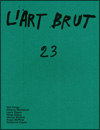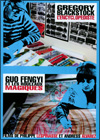Articles et ouvrages spécialisés – 2011
| Lucienne PEIRY | GUO Fengyi |
| Guido MÜHLEMANN et Michal TOMÁŠEK | Interpretation of Law in China: Roots and Perspectives |
| Marco PAOLUZZO | China memories |
| Philippe JUNOD | Retour sur l’Europe chinoise |
| Christoph BAUMER | China’s Holy Mountain An Illustrated Journey into the Heart of Buddhism |
| Urs STAHEL et Daniela JANSER (éd.) | AI Weiwei – Interlacing |
| Peter FISCHER (éd.) | Shanshui. Poesie ohne Worte ? Landschaft in der chinesischen Gegenwartskunst |
| Pierre PICQUART | La Chine dans vingt ans – et le reste du monde |
| Harro von SENGER | Meister Suns Kriegskanon |
| Marylène LIEBER | La médecine traditionnelle chinoise en Suisse : entre légitimité culturelle et légitimité professionnelle |
| CHEN Hsien-lan | Am Anfang war das Zeichen Schriftzeichen als Schlüssel zur chinesischen Welt |
| Claudia WIRZ, Peter HEDIGER, Kurt HAERRI et LI Xiaodan | China – Eine Weltmacht kehrt zurück |
|
|
|
| GUO Fengyi Lucienne PEIRY, Collection de l’art brut, Lausanne, 32 p., CHF 10.–.Ce texte monographique contient notamment des informations et des citations émanant des entretiens que Lucienne PEIRY a eus avec Mme GUO Fengyi à Xi’an en 2008 et 2009. Il figure également dans L’art brut n°23, la série des fascicules consacrés aux auteurs de la Collection de l’art brut, aux côtés d’autres textes sur les créateurs suivants : Gregory BLACKSTOCK, Helga GOETZE, Angus MCPHEE, Laure PIGEON, Guillaume PUJOLLE et George WIDENER. Richement illustré de 90 images, l’ouvrage est coédité par la Collection et Infolio. 130 p., CHF 48.-. ISBN 978-2-88474-251-1 En outre, la Collection de l’art brut (Lausanne) et Lokomotiv Films (Le Tourne) ont produit le premier et unique documentaire consacré à la créatrice chinoise, aujourd’hui décédée : GUO Fengyi et les rouleaux magiques, de Philippe LESPINASSE et Andress ALVAREZ, 2011, 19 min., v.o. (chinois), sous-titres français/anglais, CHF 39.-. Le DVD comprend aussi un film sur Gregory L. BLACKSTOCK, intitulé L’encyclopédiste.Présentation tirée du dossier de presse de la Collection de l’art brut : « GUO Fengyi (1942-2010) est née à Xi’an, en Chine. En 1962, elle obtient son baccalauréat, puis elle est employée comme technicienne dans une usine de caoutchouc et de solvants. Cette mère de quatre enfants est atteinte, à l’âge de trente-neuf ans, de crises d’arthrite aiguë et doit cesser son activité professionnelle. Après plusieurs années de souffrance, elle s’initie au qigong, branche de la médecine chinoise traditionnelle, afin de soulager sa maladie. Elle devient maître de cette discipline qui mène à la contemplation métaphysique et cet art lui ouvre de nouveaux horizons.GUO Fengyi entame sa production artistique à partir de 1989, suite à l’apparition d’une première figure sur une page de son journal intime qu’elle remplit d’écrits. Dès lors, au fil des ans, elle produit un nombre important de peintures. Pour créer, l’auteure se met dans un état de méditation. Elle se dit inspirée par Bouddha. Sa production picturale compte environ mille pièces. »Une exposition consacrée aux œuvres de cette créatrice a eu lieu du 18 novembre 2011 au 29 avril 2012. Dossier de presse en français, en allemand, en anglais et en chinois. Mme Lucienne PEIRY a dirigé la Collection de l’art brut à Lausanne de 2001 à 2011, puis directrice de la recherche et des relations internationales à la Collection de 2012 à 2014. |

|
|
|
|
| Interpretation of Law in China: Roots and Perspectives Guido MÜHLEMANN et Michal TOMÁŠEK (Hrsg.), Prague, Karolinum Press, 2011, 204 p., US$ 30.– ISBN 9788024619606 Présentation de l’éditeur : « In March 2009, the Faculty of Law of Charles University in Prague organized, together with the University of Zurich, a seminar on Chinese legal culture, its roots and perspectives. As a follow up of this event the participants and other scholars from Europe, China, South Korea and the United States brought up their ideas which are collected in the present volume. The articles deal with the Chinese legal culture, its origines and principles, modern reform stages and the question of currrent “westernization” or globalisation and “translating” between the western and Asian legal (and cultural) systems. “The task of building up modern East Asian jurisprudence is not simple. The reevaluation of East Asian civilisation and philosophy is most important for the further destiny of western legal transplants in Chinese and East Asian legal systems. Western colleagues advise that East Asian scholars should not give up the Western tradition too quickly. However, East Asian scholars are developing their own theories.“ (from the foreword by prof. Tomasek) Published as a tribute to the Second Thematic Congress of the International Academy of Comparative Law to be held in Taipei, May 24 to 26, 2012. » Guido MÜHLEMANN est historien du droit à l’Université de Zurich. Michal TOMÁŠEK est professeur à l’Université Charles de Prague. |
 |
|
|
|
| China memories Marco PAOLUZZO, Pierre-Marcel Favre, 2011, 176 p., CHF 62.– ISBN 978-2-8289-1225-3 Présentation de l’éditeur : « L’intérêt de Marco PAOLUZZO pour la Chine s’est manifesté très tôt, mais pour des raisons politiques, il refuse de s’y rendre jusqu’en 1998. Cette année-là, deux amis l’invitent à réaliser un livre sur la ville de Shanghai. Très vite, il est fasciné par ce pays où il rencontre Feifei, sa future femme. Depuis, il y retourne régulièrement, découvrant à chaque fois de nouveaux horizons.Ce livre est le résultat de nombreux voyages et d’errances aux quatre coins du pays, sans plan préconçu. C’est un carnet de route documentant le grand saut d’un pays passant de l’ère maoïste au modernisme du XXIe siècle. » M. Marco PAOLUZZO est né à Bienne en 1949. Après avoir fréquenté l’école à Bienne, à Fribourg et à Lausanne, il suit l’école de photographie de Vevey de 1977 à 1980. Il travaille tout d’abord pour la publicité et l’industrie. Dès 1995, il se tourne vers la photographie de voyage suite à la publication d’Islande, son premier album ; depuis, il parcourt le monde pour des magazines. Il a déjà publié une douzaine d’ouvrages dont Lumières d’Ethiopie, Pékin, Islande d’ombre et de lumière, Ethiopia, Terra Borealis et Îles Féroé (Favre).Autres ouvrages auxquels il a participé :
Le site de l’auteur : |
 |
|
|
|
| Retour sur l’Europe chinoise Philippe JUNOD, Artibus et historiae, n° 63, 2011, pp. 217-258, €86.00 ISSN 0391-9064 Présentation de l’éditeur : « While the different forms of chinoiserie in the eighteenth century and of japanism in the nineteenth century have been the subjects of innumerable publications, the contribution of the Orient to the preceding periods has generally been obscured by historians of Western art. Is this real blind spot the fruit of ignorance, or is it the sign of an anachronistic and Eurocentric chauvinism ?This paper first recalls the importance and frequency of secular contacts along the Silk Route travelled by missionaries and merchants. The two subsequent case history studies illustrate the phenomena both of hybridisation and of crossbreeding which result in formal borrowings. In the first, the presence of clouds or Chinese mountains in landscape paintings in Europe from the fifteenth century onward testifies to the migrations from East to West. The second concerns the architectural motif of the door in the shape of a monster’s mouth in the garden of Bomarzo and in the Palazzo Zuccari in Rome, and argues that this too seems to come from an exotic iconographic source, in this case, that ofthe Indonesian kala. » M. Philippe JUNOD a été professeur d’histoire de l’art à l’Université de Lausanne de 1971 à 2003. |
 |
|
|
|
| China’s Holy Mountain An Illustrated Journey into the Heart of Buddhism Christoph BAUMER, I.B.Tauris Publishers, 384 p., £25.00 ISBN 9781848857001 Présentation de l’éditeur : « Rising from Shanxi Province like a three-dimensional mandala, the soaring peaks of Wutai Shan (‘Five-terrace Mountain’) have inspired pilgrims and travellers for almost two millennia. A striking terrain of towering emerald forests, wraith-like mists and crenellated ridges, this consecrated and secluded site is said to be the spiritual home of Wenshu Pusa, Bodhisattva of Wisdom. It is one of the most venerable and important Buddhist sanctuaries in China, yet still remains relatively little known in the West. Christoph BAUMER has travelled extensively in the Wutai Shan region, and here offers the first comprehensive account of the cradle of Chinese Buddhism. In his remarkable new travelogue, 300 luminous photographs capture the unique spirituality of the 60 monasteries which straddle the complex. Charting festivals, rituals, pilgrimages and the daily life of the monks, abbots and abbesses, China’s Holy Mountain is both a splendid introduction to the history of Buddhism in East Asia and an evocative and lavishly-illustrated gazetteer of the monasteries and sacred artefacts themselves. It will be an indispensable resource for students of Asian religion and philosophy, with further appeal to general readers. Christoph BAUMER – a leading explorer of Central Asia, Tibet and China – has written several well-received books in the fields of history, religion, archaeology and travel. These include The Church of the East: An Illustrated History of Assyrian Christianity (2006) and Traces in the Desert: Journeys of Discovery across Central Asia (2008), both published by I.B.Tauris. Dr Baumer is President of the Society for the Exploration of EurAsia and a member of the Explorer’s Club, New York, and the Royal Asiatic Society and the Royal Geographical Society, London. »Cet ouvrage est une version étendue de Wutai Shan – Mittelpunkt des chinesischen Buddhismus, paru en 2008. |
 |
|
|
|
| AI Weiwei – Interlacing Urs STAHEL et Daniela JANSER (éd.), Göttingen, Steidl, 496 p., CHF 45,–. En anglais et en allemand, avec environ 600 illustrations. ISBN 978-3-86930-337-6 Cet ouvrage est publié à l’occasion de l’exposition que le Fotomuseum de Winterthur consacre, du 28 mai au 21 août 2011, aux photographies de l’artiste AI Weiwei.Présentation de l’éditeur : « AI Weiwei is a conceptual artist, highly critical of society and dedicated to the creation of and friction between realities. As an architect, sculptor, photographer, blogger, twitterer, interview artist and political activist, AI Weiwei acts as a seismograph for current social problems, and blends the boundaries between art and life. Interlacing presents the complexity of Weiwei’s oeuvre through blogs, critical essays and hundreds of photographs. AI Weiwei was born in 1957 and studied at the Beijing Film Academy. In 1978 he co-founded the artist collective The Stars and in 1981 studied under Sean Scully at Parsons School of Design in New York. In 1997 Weiwei co-founded China Art Archives & Warehouse (CAAW), and in 1999 he opened his studio in Caochangdi. An artist of international acclaim with a particular interest in architecture, AI Weiwei was instrumental in the design of Beijing’s famous ‘bird’s nest’ Olympic stadium. » |
 |
|
|
|
| Shanshui. Poesie ohne Worte ? Landschaft in der chinesischen Gegenwartskunst Peter FISCHER (éd.), Ostfildern, Hatje Cantz, 240 p., CHF 54,–. En anglais et en allemand, avec de nombreuses illustrations. ISBN 978-3-7757-2849-2 Œuvres de la collection Sigg, avec des textes d’AI Weiwei, Nataline COLONNELLO, Britta ERICKSON, Peter FISCHER, Hu Mingyuan, Katja LENZ, Uli SIGG, YIN Jinan und ZHANG Wei. 2011.Présentation de l’éditeur : « Shanshui, das chinesische Wort für Landschaft, setzt sich zusammen aus den beiden Zeichen für Berg und Wasser, unverzichtbare Bestandteile historischer Shanshui-Malerei. Deren Bedeutung liegt viel mehr in ihrem transformatorischen Potential, das Individuum mit der Welt zu verbinden, als in der Wiedergabe einer Landschaft. Selbst in der vermeintlich vom Ballast der Tradition befreiten und von der menschlichen Figur dominierten Gegenwartskunst finden sich – mehr oder weniger offensichtlich – Elemente dieser tief in der chinesischen Kultur verwurzelten Tradition der Berg-Wasser-Malerei.Die in Zusammenarbeit mit dem wohl bekanntesten zeitgenössischen chinesischen Künstler AI Weiwei konzipierte Publikation schlägt den Bogen von ausgesuchten historischen Shanshui-Gemälden zu bedeutenden Protagonisten der chinesischen Gegenwartskunst. Der Band gruppiert deren Werke nach kennzeichnenden Merkmalen, wie etwa die Verarbeitung traditioneller Vorlagen und philosophischer Konzepte, Experimente mit neuen Medien oder Fotografie als wesensverwandter Ausdrucksform zum »einen Pinselstrich«, den schon SHI Tao, der chinesische Meister des 17. Jahrhunderts propagierte. » —– « Shanshui, the Chinese word for landscape, is a compound of the two symbols for mountain and water, indispensable elements of historical shanshui painting. Its significance lies more in its transformational potential for connecting the individual to the world than in the accurate rendering of a particular landscape. Even in contemporary art in China, which is dominated by the human figure and supposedly liberated from the burden of tradition, there are more or less obvious elements of traditional mountain-water painting, which is deeply rooted in the nation’s culture. This publication was conceived in collaboration with AI Weiwei – probably China’s best-known contemporary artist – and it strikes an arc from selected historical shanshui paintings to important protagonists of contemporary Chinese art. The volume groups the works according to specific characteristics, such as the manipulation of traditional source materials and philosophical concepts, experiments with new media, or photography as a mode of expression essentially related to the “one brushstroke” propagated by SHI Tao, the seventeenth-century Chinese master. » |
 |
|
|
|
| La Chine dans vingt ans – et le reste du monde Demain, tous Chinois ? Pierre PICQUART Éditions Favre SA, 2011, 336 p., CHF 32.–. ISBN 978-2-8289-1199-7 Résumé de l’éditeur : « La planète tournerait-elle à l’envers ? Dans un tournant décisif, la planète a basculé de l’Occident vers l’Asie et de l’ouest vers l’est. Face aux crises actuelles et à venir, économiques et financières en Occident, dans les pays arabes, dans le nucléaire et l’environnement, et à l’arrivée prochaine de la Chine comme 1ère puissance mondiale avant 2020, Pierre Picquart, qui rentre tout juste de Chine, nous livre une analyse et une prospective géopolitique de la Chine et du reste du monde dans vingt ans.Pour mieux comprendre les enjeux, anticiper et réussir, Pierre PICQUART nous conduit dans le tourbillon des projections mondiales et de la dynamique chinoise, en matière d’économie, d’innovations, de hautes technologies ou de puissance diplomatique et militaire. La Chine, future superpuissance, possède les plus grandes réserves de change du monde et s’affirme comme le poids lourd de la finance internationale.Qu’en sera-t-il dans 20 ans ? L’auteur imagine ce que cela peut engendrer pour l’avenir : le lent déclin des États-Unis, les combats du monde européen et occidental pour s’accrocher à leur suprématie, la conquête de la Chine et l’ascension des pays émergents, dont l’Inde, le Brésil et la Russie. Cependant, rien n’est joué ni perdu en Occident ! Nos potentiels sont considérables. Va-t-on vers un dialogue ou un choc des titans ?Sous de multiples facettes, l’auteur nous invite à un surprenant voyage entre le présent et l’avenir, celui de la nouvelle Chine, des défis et des progrès spectaculaires à venir, et du reste du monde d’ici à 2030. » Pierre PICQUART est docteur en géopolitique, spécialiste en géographie humaine. Il est l’auteur d’une thèse de doctorat et de nombreux travaux sur la Chine et le monde chinois contemporains. Il est le fondateur et directeur du Centre d’études, de développement et de recherche internationale sur la Chine contemporaine. Expert en 2001 et en 2006 pour la Commission européenne, il a rédigé notamment « L’Empire chinois » en 2004 et « La forme olympique de la Chine » en 2008. Contact : |
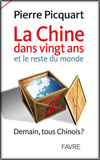 |
|
|
|
| Meister Suns Kriegskanon Harro von SENGER Reclam, 2011, 128 p., EUR 5.–. ISBN 978-3-15-018841-5 Une traduction en langue allemande de L’art de la guerre de Sunzi (Sunzi Bingfa). Résumé de l’éditeur : « Aus den über 4’000 Militärtraktaten des alten Chinas ragt der Kriegskanon Meister Suns heraus. Der über 2000 Jahre alte Text stellt eine Sammlung von Anweisungen für eine gute Kriegsführung dar, die im günstigsten Fall ohne eigene und gegnerische Verluste zum Sieg führt. Harro von SENGERs präzise neue Übersetzung aus dem Chinesischen führt – angesichts der Mehrdeutigkeit des Textes – Verständnisalternativen an, gibt in einem Kommentar wertvolle Erklärungshilfen und stellt in einem Nachwort Eigenheiten des Textes durch einen Vergleich mit Schillers Wallenstein, Clausewitz’ Vom Kriege und dem heutigen Völkerrecht heraus. Erstmals wird dieser Klassiker so in seiner ganzen Tiefgründigkeit zugänglich. » M. Harro von SENGER est professeur de sinologie à l’Université de Freiburg en Breisgau et expert en droit chinois à l’Institut suisse de droit comparé à Lausanne. |
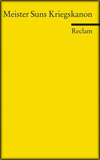 |
|
|
|
| La médecine traditionnelle chinoise en Suisse : entre légitimité culturelle et légitimité professionnelle Marylène LIEBER Revue suisse de sociologie, vol. 37, no 3, 2011, pp. 461-480. Résumé paru dans la Revue : « L’étude de la pratique de la médecine traditionnelle chinoise (MTC) montre qu’elle est le lieu d’une compétition entre médecins chinois ayant suivi une formation universitaire complète en Chine et thérapeutes suisses aux formations sensiblement plus courtes. Cet article rend compte de la variété des acteurs de la MTC en Suisse et de leurs stratégies de légitimiité professionnelle. Occidentaux et Chinois, deux groupes aux formations et aux positions sociales distinctes, tentent de fixer les frontières de la pratique légitime de cette discipline en mobilisant des répertoires culturels. » |
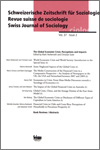 |
|
|
|
| Am Anfang war das Zeichen Schriftzeichen als Schlüssel zur chinesischen Welt CHEN Hsien-lan, 2011, 158 p., CHF 31, — ISBN 9781492721710 «Was hat das chinesische Zeichen für Mensch mit Alberto Giacomettis Werken zu tun? Weshalb ist das chinesische Zeichen für Himmel vom Zeichen für Mensch abgeleitet und was bedeutet Himmel für die Chinesen? Ist das Zeichen für Mitte das Abbild einer Zielscheibe oder einer Trommel? Wieso heißt China «Reich der Mitte»? Die chinesische Schrift, die mehr als 5000 Jahre existiert und bis heute fortlebt, ist die Quelle der chinesischen Kultur. Anhand von Schriftzeichen eröffnet dieses Buch einen faszinierenden Zugang zur chinesischen Welt. Mittels einer interkulturellen Perspektive werden Ähnlichkeiten und Unterschiede zum westlichen Denken herausgearbeitet.Frau CHEN Hsien-lan, geboren und aufgewachsen in Taiwan, lebt seit 20 Jahren in Europa. Sie studierte französische Literatur an der Sorbonne in Paris und promovierte 2002 an der Universität Zürich. Ihre Dissertation über den amerikanisch-französischen Schriftsteller Julien Green wurde mit Unterstützung des Schweizerischen Nationalfonds publiziert. Sie arbeitete in der Medienbranche als Publizistin und Redakteurin und hatte ausserdem eine Stelle als Assistenz-Professorin. Neben ihrer Lehrtätigkeit beschäftigt sie sich mit interkulturellen Themen. Dieses Buch ist ein Ergebnis ihrer Forschungstätigkeit.» |
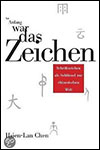 |
|
|
|
| China – Eine Weltmacht kehrt zurück Claudia WIRZ, Peter HEDIGER, Kurt HAERRI et LI Xiaodan Lucerne, Pro Libro, 2011, 104 p., CHF 19, — ISBN 978-3-905927-17-7 «China hat eine fünftausendjährige Kultur mit herausragenden Dynastien und einem grossen Sinn für Bildung, Wissenschaft und Kunst. Heute ist es eine ökonomische Grossmacht, welche die USA überrunden wird. Doch wie steht es mit der politischen Freiheit? Es gilt, China zu entdecken. Vier anerkannte Kenner haben verschiedene Aspekte des Reiches der Mitte im Rahmen einer Veranstaltung der Seniorenuniversität Luzern im Herbst 2010 erkundet. Hier sind die gehaltenen Vorträge nachzulesen.» |
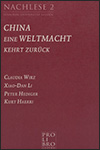 |
Modification de la page le 16.08.2023

